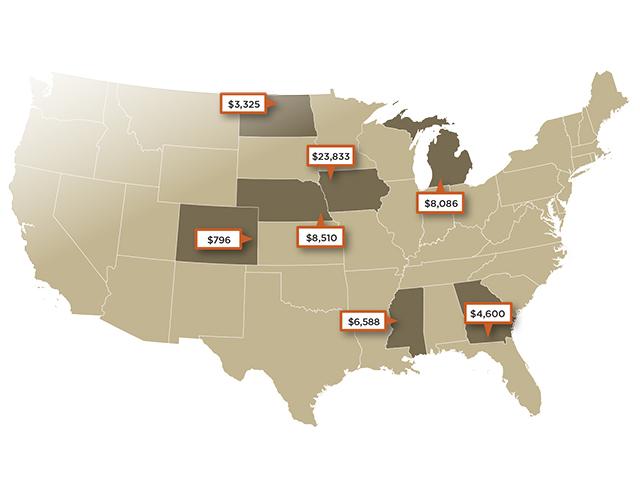DTN Oil
Oil Gains on EU-Russia Gas Standoff, NATO Warnings
WASHINGTON (DTN) -- New York Mercantile Exchange oil futures and Brent crude traded on the Intercontinental Exchange advanced mid-morning trade Thursday as investors assessed new geopolitical risks steaming from a suspected sabotage attack on Nord Stream 1 and 2 pipelines that have already triggered a military warning from the North Atlantic Treaty Organization to all parties responsible for the attack.
NATO officially blamed sabotage for the series of blasts that severely damaged Nord Stream pipelines, leading to the leaks on three separate locations. Sudden and unexplained leaks from the undersea Nord Stream pipelines from Russia to Germany appear "not a coincidence" the European Union said on Thursday, a statement that adds weight to fears of sabotage. While no evidence has been provided, speculations are swirling that Russia itself might be behind the attack on this critical infrastructure. On Wednesday, Kremlin's spokesperson Dimitry Peskov dismissed those suggestions as "quite predictable and also predictably stupid." The attack adds news risks to the EU-Russia gas standoff that escalated earlier this month when Gazprom halted gas deliveries through Nord Stream 1, blaming the debilitating impact of the Western sanctions. Nord Stream 1 is the single biggest pipeline for gas from Russia to Europe and has the capacity to deliver 55 billion cubic meters (bcm) of gas a year. Continued supplies through the pipeline have been seen as crucial to prevent a deepening of the energy crisis.
P[L1] D[0x0] M[300x250] OOP[F] ADUNIT[] T[]
Further lending support to the oil complex, U.S. Energy Information Administration reported on Wednesday total refined product supplied to the U.S. market, a measure of demand, jumped 1.8 million barrels per day (bpd) last week to 20.77 million bpd, the third-highest weekly implied demand rate during the third quarter, according to EIA data.
U.S. demand for distillate fuels, which correlates closely with economic activity, unexpectedly spiked 768,000 bpd to 4.178 million bpd -- the highest weekly consumption rate since early July. The sharp jump in domestic demand, which held well below 2021 levels for the past 2 1/2 months, averaging just 3.6 million bpd, might suggest renewed strength for domestic manufacturers. Business activity rose to a two-month high in September, and new orders grew for the first time in four months during the final month of the third quarter, which ends Friday.
For gasoline, demand rose 504,000 bpd from the previous week to 8.825 million bpd, and gasoline stocks were drawn down by a hefty 2.4 million barrels (bbl) to 212.2 million bbl, a nearly 11-month low.
Near 9:30 a.m. EDT, November WTI futures slipped $0.30 to $81.83 per bbl, while ICE November Brent futures declined $0.20 to $89.14 per bbl ahead of expiration Friday afternoon, with the December contract expanding its discount to November delivery to $1.42 per bbl.
NYMEX October RBOB futures fell 4.16 cents to $2.5363 per gallon, with the November contract traded near $2.5350 per gallon. The October ULSD contract declined 3.95 cents to $3.4116 per gallon, widening its premium to the November contract to 11.46 cents. October products futures also expire Friday afternoon.
Liubov Georges can be reached at liubov.georges@dtn.com



